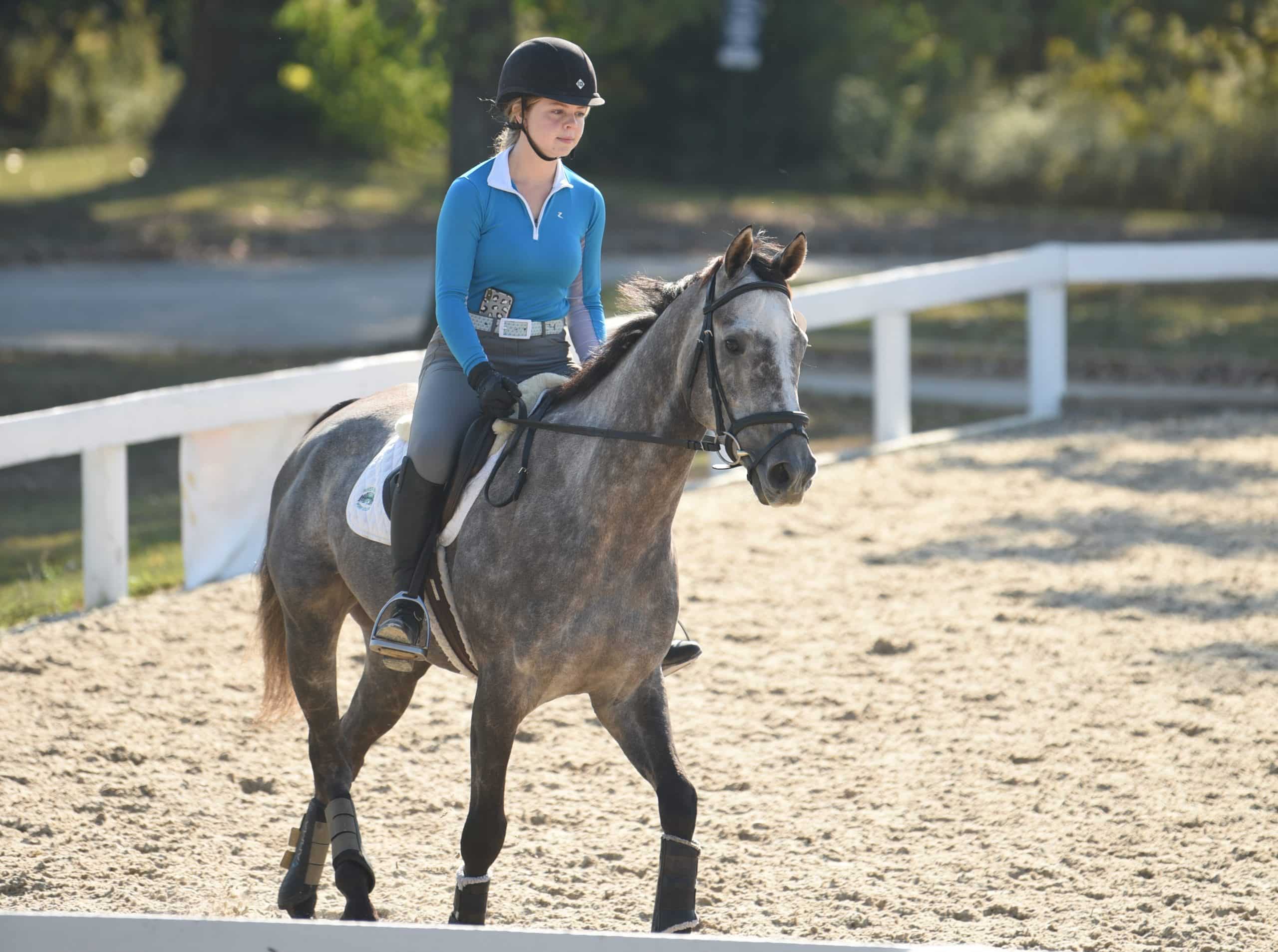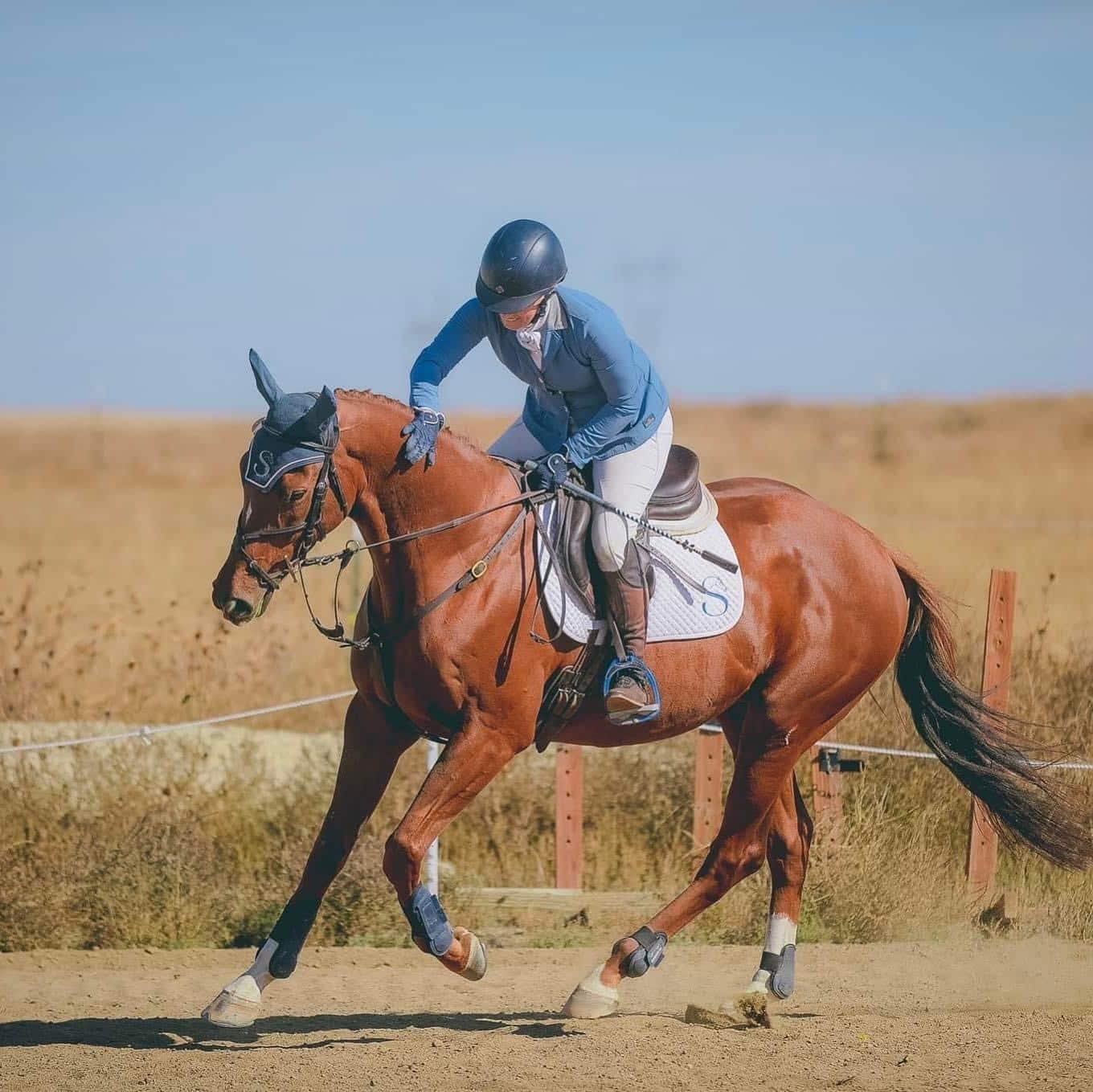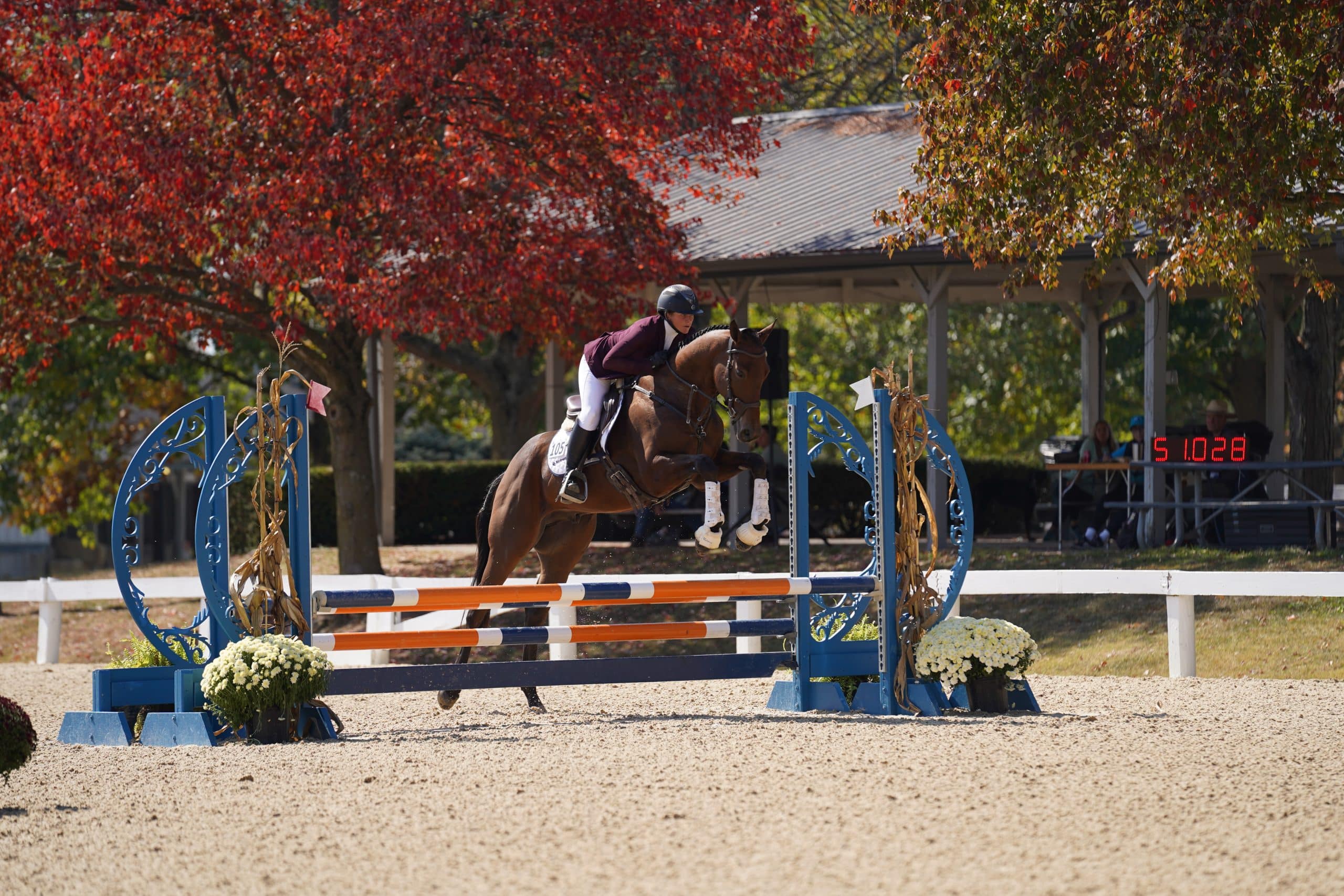
Photo by Victoria Morano
Restarting an off-track Thoroughbred (OTTB) can be a very rewarding yet challenging experience. Whether you have restarted one OTTB or 100, each horse presents its own set of strengths, weaknesses and personality traits.
Understanding the basics of retraining OTTBs can help riders make the experience enjoyable and educational for both horse and human. In the first 10 rides after a racehorse’s retirement, new owners can learn a great deal about their OTTBs, including temperament under tack, softness in the bridle, acceptance of the leg and potential soundness concerns not noticeable from the ground. These first rides can also help horses understand the slower pace of their new job and what their new rider might ask of them.
To Let Down or Not to Let Down
Trainers often debate whether OTTBs should be “let down” before being restarted. During this period they might have anywhere from a few weeks to a year of time off, typically just turned out to pasture. The theory behind this practice is it allows the horse’s body and mind to rest and recover from his time on the track.
Whether to give your OTTB a break from work after his retirement from racing is very horse-dependent, says Carleigh Fedorka, PhD, assistant professor of equine reproductive physiology at Colorado State University, in Fort Collins, and owner of Sewickley Stables. “Some horses come out of their last start fully ready (mentally and physically) to hit the ground running, and I truly believe giving them time off only weakens their musculoskeletal structure.”
Thoroughbreds typically thrive in work, adds Kristina Hobbs, owner of Reciprocity Thoroughbreds, in Arlington, Texas, who restarts OTTBs for English disciplines. “We’ve found that sometimes, letting them down can make them lose weight and strength, making the transition into a new career harder on them,” she explains.
However, OTTBs might need a break for any number of reasons. “Some horses need a mental break,” says Fedorka, who focuses on prepping her horses for eventing. “Sometimes we will (ride them), realize that and then decide to let them down for a month or so.”
Those that have foot or body soreness can benefit from recovery time, which can vary greatly in length depending on the degree of the problem. Having a good relationship with your veterinarian is key when addressing physical pain, Fedorka adds.
Setting Goals for the First Rides
As with any ride, it is important to have a plan before getting on and to manage expectations so the horse has a positive experience and does not get pushed beyond what he can handle. In the first rides trainers should focus on maintaining a slower tempo and rhythm along with relaxation, says Hobbs. “These rides will set the tone for the rest of their career.”
“I ask quite a bit of my horses in the first few rides because I want to assess their adaptability to pressure, their response to not understanding something and their gaits,” says Fedorka. “I cannot assess their gaits unless the horse is being ridden straight, and that requires some contact at this phase in their training.”
Fedorka also reminds riders to use what the horse has learned as a racehorse to their advantage in the first rides after the racetrack. “They are ridden in contact on the track and, therefore, I ride them in contact off the track.” Once the horse understands the concept of being straight and forward, you can remove some of the pressure to allow them to explore relaxation and stretching down into the bridle.
“Some horses come off the track with straightness and adjustability within the first few minutes of their first ride,” says Fedorka. “These horses we’ll let pop over a fence quite quickly.” If horses struggle to understand the more basic concept of straightness in contact, they should not advance to more advanced work until they have mastered the simpler concepts.

Carleigh Fedorka emphasizes the importance of treating each OTTB as an individual. Photo by JJ Sillman
Common Misconceptions
“I am often asked how I make the transition smooth for these horses,” says Hobbs. “I always say, ‘Treat them like a normal horse.’ ”
OTTBs are well-broke and handled frequently at the racetrack, so treating them as though they know their job — they often don’t need to be completely restarted, just shown their new role — is a key to success, she explains. “They might be nervous (in their new home), but they know their job.”
It is important for riders to be confident in knowing OTTBs are well-trained horses and should ride them accordingly. Not having goals or expectations or keeping the work overly basic can be boring and even stressful for OTTBs. “When you go in expecting the worst, you will get it,” says Hobbs.
“I think there is a gross assumption that because these horses raced at high speeds that they are not truly broke to ride,” adds Fedorka. “I would argue the opposite. Go to any racetrack and watch the goings-on at the backside. These horses are happily hacking on the buckle to and from the track, they wait their turn to train, they trot to warm-up, and the majority of the time their gallops are not much more than a working canter.”
It can also be detrimental to assume all OTTBs are equal. Like individuals of any breed, each Thoroughbred is unique. Some horses were raised on small farms with quiet environments, while others grew up at very large, bustling breeding operations. Some horses had very kind handlers early in their lives, and others might not have been as lucky. Each factor, paired with genetics, will impact the horse you are presented with, says Fedorka. Some horses are hot or quirky, while others are lazy, but treat each one as an individual and curate a team that is ready to do the same, she adds.
“Thoroughbreds get this crazy reputation and, because of that, people tend to have a lot of unnecessary anxiety around them,” she says. “But we have to realize that is the one thing they haven’t been exposed to.”

Kristina Hobbs, pictured here with her 2023 Makeover horse Air Force Angel, says she treats her OTTBs coming right off the track “like normal horses.” Photo by Rachel Milewski
Take-Home Message
“I tend to see buying OTTBs as having an advantage over a barely broke horse of another breed,” says Hobbs. “When they’ve been treated right by their track trainers, they have been exposed to so much, which is definitely an advantage.”
When restarting an OTTB, work with reputable contacts and, especially if you are new to Thoroughbreds, someone who can help you assess the horse’s physical and mental state, she adds.
As with any horse, be confident when working around your OTTB, and he or she will respond positively. “Go into your training plan with calmness and a bit of a nonchalant attitude,” says Fedorka. It is important to have a plan, but remember to be flexible and set each horse up for success as you lay the foundation for a future career.
Haylie Kerstetter, digital editor at The Horse, is a Pennsylvania native and lifelong horse owner. She competed in the 2019 Thoroughbred Makeover with her horse Warlander and now owns 2020 Makeover graduate Grand Teton, whom she hopes to develop as a jumper.

